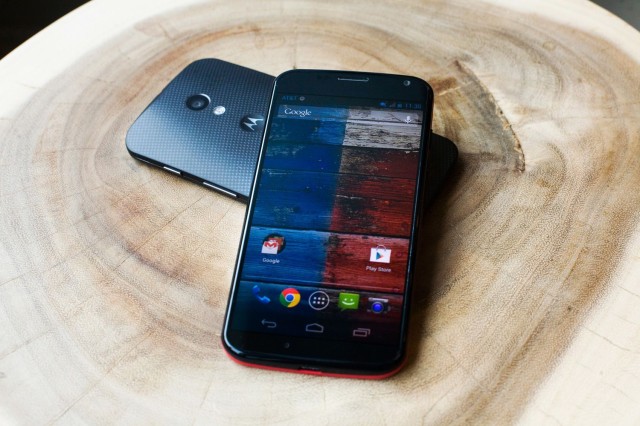Why Google Should Open-Source the Moto X
The good people at Motorola will probably clock me in the head with a Droid Maxx battery for saying this, but shouldn’t Google open-source Moto X technology?
After all, why did Google buy Motorola in the first place? In addition to the original assumed justification, which is protection from patent lawsuits, Google presumably bought Motorola in order to gain control of a major smartphone handset maker to lead the direction of Android hardware.
And the purpose of that leadership — the purpose of Android itself — is to maximize the use of Google’s wide range of mobile services.
The Moto X and the new Droids do that beautifully.
The Moto X gives users a Nexus-like, Google-centric UI, plus bells and whistles that emphasize Google’s integrated services, including Google Now, Google+, Google Maps, Gmail, YouTube and others.
The best part is the Moto X’s ability to always pay attention to its context — location, and so on — and always be listening for the “OK Google Now” command.
Both of these features come courtesy of Motorola’s secret and proprietary X8 technology.
Motorola would no doubt like to keep the X8 entirely to itself as a competitive advantage against the likes of Apple, Samsung and other handset vendors.
That’s a reasonable desire. But how does that support Google’s strategic imperative of promoting the use of Google services?
It doesn’t.
The keeping of X8 technology as closed, secret and proprietary is in direct contradiction to Google’s larger aims for both Android and Motorola.
Worse, the actual abilities of the X8 are so compelling that they will almost certainly be duplicated anyway by a tiny number of other handset and tablet makers, such as Amazon, Samsung, LG, Sony and possibly Chinese companies like Lenovo, Huawei and ZTE.
Companies with the means to duplicate X8 functionality are also in the position to replace Google’s services with their own — their own voice technology, their own search, their own maps, their own email software. (And, in Samsung’s case, their own operating system.)
This could result in a market in which, say, half the available handsets on the market do Moto X-like magic, but most use proprietary non-Motorola technology and also route around Google services. The other half will not have these features, and will find themselves at a disadvantage against those that do.
Wouldn’t it be better for Google — and Android users — if Motorola open-sourced its X8 technology or even made and sold the chips to Android handset makers? That way, the companies willing to favor Google services would have an advantage, rather than a disadvantage, against the Amazons and the Samsungs who would duplicate Moto X features and functions without using Motorola or Google technologies or services.
Beyond the X8, I think it would also make sense to bake some of the Moto X’s best features right in to Android itself, such as the Trusted Devices feature (where Bluetooth-connected devices bypass the passcode), Motorola Skip support, the quick-draw camera gesture and all the rest.
Google is not a hardware company. It’s a services company, and any hardware must be subordinated to the greater good of Google services.
This idea isn’t fair to Motorola. And upon reading this Motorola executives and engineers might spray their coffee.
But Google must make a decision: Did Google buy Motorola to punish Android handset makers for their embrace of Google’s OS by clobbering them in the market with closed, proprietary technology? Or did it buy Motorola to drive adoption of Google’s open OS and integrated mobile services?
It’s time to open-source Motorola’s X8 technology and integrate the rest into Android. And then, Motorola engineers should get back into the lab to create the next generation of killer tech — and open-source that as well.



